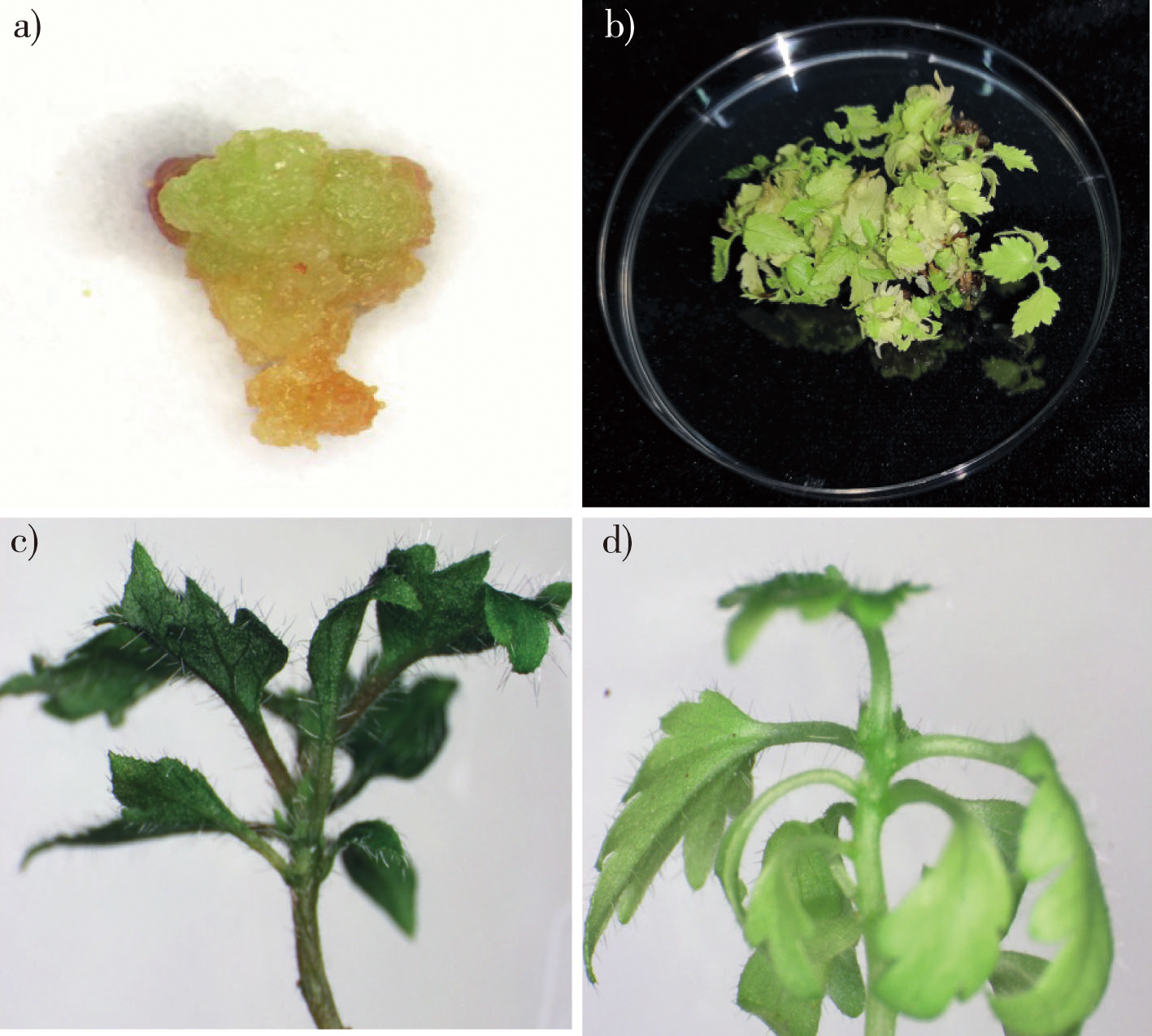 PDF(2243 KB)
PDF(2243 KB)


CRISPR/Cas9 ribonucleoprotein-mediated precise mutation of BpGLK1 in birch without T-DNA insertion
WANG Wei, QIU Zhinan, LI Shuang, BAI Xiangdong, LIU Guifeng, JIANG Jing
Journal of Nanjing Forestry University (Natural Sciences Edition) ›› 2024, Vol. 48 ›› Issue (1) : 11-17.
 PDF(2243 KB)
PDF(2243 KB)
 PDF(2243 KB)
PDF(2243 KB)
CRISPR/Cas9 ribonucleoprotein-mediated precise mutation of BpGLK1 in birch without T-DNA insertion
【Objective】 The CRISPR/Cas9 ribonucleoprotein (RNP) system is an efficient gene editing technology that is simple and accurate and has been widely used in animal and plant gene editing research. Introducing the Cas9 protein and gRNA RNP complex into recipient cells by particle bombardment to obtain marker-free gene-edited plants provides an effective approach for the rapid plant mutant creation. In this study, the BpGLK1 gene of birch (Betula platyphylla × B. pendula) was used as the target gene for editing, and CRISPR/Cas9 RNP technology was used to edit the BpGLK1 gene without T-DNA insertion. 【Method】 A target site was designed for the first exon of birch BpGLK1. The target fragment of BpGLK1-E1 was amplified by PCR. The recombinant plasmid pAbAi-BpGLK1-E1 was constructed by enzyme digestion and ligation, whereafter the plasmid was linearized and reacted with Cas9 protein to detect the CRISPR/Cas9 RNP activity and gRNA accuracy in vitro. Zygotic birch embryo-induced calluses were used as receptor for BpGLK1 directed mutagenesis via particle bombardment. 【Result】 The in vitro CRISPR/Cas9 RNP activity assay indicated that the Cas9 protein and gRNA could effectively cleave specific BpGLK1 target sites. The mature birch embryos were bombarded with gold particles coated with Cas9 protein and gRNA (RNP) at a distance of 12 cm and 7 584.5 kPa after 25 d of culture without light. After differentiation and subculturing, a glkc mutant with yellow-green leaves was obtained. Sequencing results showed that the mutant had a homozygous deletion of 18 bp in BpGLK1 gene. 【Conclusion】 A precise birch BpGLK1 mutation without T-DNA insertion was achieved using CRISPR/Cas9 editing technology.

CRISPR/Cas9 system / no T-DNA insertion / gene editing / Betula platyphylla×B. pendula
| [1] |
|
| [2] |
|
| [3] |
|
| [4] |
|
| [5] |
|
| [6] |
|
| [7] |
|
| [8] |
刘苗霞, 张颜睿, 付凤玲. 标记基因在植物转基因中的安全性研究[J]. 安徽农业科学, 2011, 39(28):17186-17187,17227.
|
| [9] |
|
| [10] |
|
| [11] |
刘星, 苏良辰, 张拜宏, 等. 异源表达花生基因AhGLK1对拟南芥glk1glk2突变体表型特征及抗旱性的影响[J]. 华南师范大学学报(自然科学版), 2020, 52(3):78-84.
|
| [12] |
|
| [13] |
任烁淇, 刘冰洋, 李雪莹, 等. 白桦黄叶突变株叶色变化规律及苗高生长特性分析[J]. 植物研究, 2018, 38(6):852-859.
|
| [14] |
张嫚嫚, 刘桂丰, 冮慧欣, 等. 白桦黄叶突变株Long non-coding RNA(LncRNA)测序及其靶基因[J]. 东北林业大学学报, 2019, 47(10):1-7.
|
| [15] |
李菲, 张淑江, 章时蕃, 等. 基因枪法介导大白菜小孢子转基因技术研究初报[J]. 园艺学报, 2017, 44(1):62-68.
|
| [16] |
|
| [17] |
|
| [18] |
|
| [19] |
|
| [20] |
|
| [21] |
|
| [22] |
唐亚萍, 杨生保, 杨涛, 等. 转化同源Golden Like转录因子提高番茄品质的研究[J]. 分子植物育种, 2017, 15(10):3969-3975.
|
| [23] |
李艺迪, 顾宸瑞, 冮慧欣, 等. 转基因金叶银中杨叶色及生长变异分析[J]. 植物研究, 2020, 40(6):897-905.
|
| [23] |
李艺迪, 顾宸瑞, 冮慧欣, 等. 转基因金叶银中杨叶色及生长变异分析[J]. 植物研究, 2020, 40(6):897-905.
|
/
| 〈 |
|
〉 |